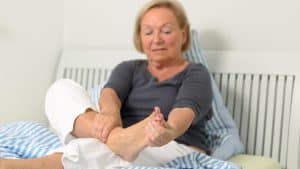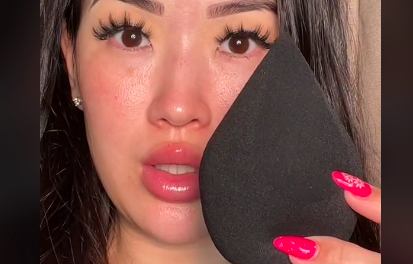
This is indeed a blog about wearing minimalist shoes. But I want to disclose up front that I do still wear pretty shoes with heels for fancy occasions. I admit that this is not an optimal strategy for my feet and my alignment. It is a bit like having an occasional cigarette (which I do not do.)
Let’s Start at the Beginning
Your feet and ankles have 25% of the human body’s bones and muscles. They articulate about 33 joints, and the tissues in between all these joints are full of proprioceptive abilities that signal to the pelvis how to make adjustments to keep you balanced when upright.
It is logical to me that the best way to optimize your balance is to allow all of the built-in engineering of nature to do its work. This means barefoot or minimally constructed shoes.
Let’s Talk About the Effect of Wearing Shoes
Shoes were invented to protect our feet from dangers on the ground. Sadly, the stiff and bulky soles of today’s shoes make it difficult for your feet to feel the ground, and they also force your foot into unnatural shapes. The act of wearing shoes every day has created a mitten hand situation for your feet.
We have weak underdeveloped muscles within the foot, and we have offloaded a large part of weight-bearing onto the lower leg and the joints in the foot.
Your toes should be able to move separately from your feet and your toes should also be able to move separately from each other. Additionally, the front half of your foot should move separately from the back half.
A stiff sole makes it hard for your muscles to do all of their work, and that affects your balance and your arches. Fallen arches can lead to pain and dysfunction along the chain. Purchasing arch supports is often recommended by foot doctors.
But, just like wearing your arm in a sling or your leg in a cast, you have outsourced the work of your muscles and you will have atrophy from the sling or cast being in place. This cycle can be broken, but it will take slow work on your part.
The shape of shoes affects your feet as well. Bunions are a result of undo pressure from shoes that pinch your feet. Essentially, when the toe box is too narrow. They also result from walking with a turned-out foot. That is because the turnout forces pressure into the side of the big toe joint.
Next on the chopping block – high heels. High heels is any height that is above the rest of the foot. Go ahead and take a look at your “sensible” shoes. It is quite likely that they have a positive heel. A positive heel changes the angle of the foot from its normal axis. This geometry changes your alignment.
We compensate for the high forward pitch by adjusting the way our knees, pelvis and spinal curve are sitting above the shoes. Our bodies will have individual differences in how we compensate for the heels, but rest assured, you will compensate.
This leads to pain anywhere along the chain. In addition, the positive sole in your shoe reduces your ability to have a glute muscle and hip-building gait through a posterior push off.
The Good News
Actually, the good news is that there are things you can do no matter what your age.
Let’s Start by Getting Out of Your Positively-Soled Shoes
The changes in your alignment from any elevation changes your center of mass and thus the path of weight through your body. Start small, it can take a year or two to shift to minimal shoes. Start with a slightly lower heel and the exercises on this video:
Begin with a small amount of time in the slightly lower shoe or sneaker. Gradually increase the amount of time you spend wearing them. You are slowly strengthening the muscles in your feet.
Get a Wider Toe Box
Trace the outline of your barefoot on a piece of paper. Put the shoe you wear most often on the page and trace the toe box of the shoe. This will tell you if you are squishing your toes.
Find a More Flexible Sole
A stiff shoe prevents you from using all your muscles and joints. You need more movement to increase your foot strength and the ability of your feet to feel the ground below them.
An Attached Front and Back of Your Shoe Is Safer Than Slip-On Shoes
It can seem beneficial to slip on a shoe without having to bend over. However, clenching your feet onto the shoe bed creates a clenching that shortens and stiffens the muscles in your toes and ankles, which once again inhibits foot strength and flexibility.
Toe Spring Is a Piece of the Puzzle That I Would Be Remiss If I Did Not Mention
A majority of athletic shoes have an upwardly curving toe. This toe spring decreases the work of the muscles around the joints that connect the toes to the foot bones. The higher the upwards curve of the toes in respect to the rest of the foot, the less work the foot muscles have to perform to support the joints when walking.
Goals Are Important
I know this all may seem pretty overwhelming if you have never considered the foot health aspect of less support and not more. Now, I am NOT suggesting that everything you have been told is wrong!
I am suggesting that your goal is super important in deciding if you would like to try to move towards a more minimalist shoe.
- Is your goal less pain and the least amount of inconvenience? Maybe you will stick with your current situation.
- Is your goal to build bone density when you exercise? You may want to consider moving towards a shoe that brings the path of weight less into the front of your foot and your knee.
Do you have questions? Sarah is happy to help: sarahpurcellmovement@gmail.com
What do your favorite shoes look like? How often do you wear them? Did you choose them for comfort or style? Would you call them ‘minimalist’? Or do you still wear heels? Are you ready to start building more muscle and bone in your feet? Ladies, let’s discuss our shoes!





